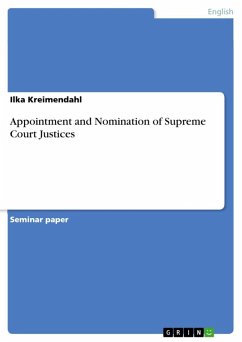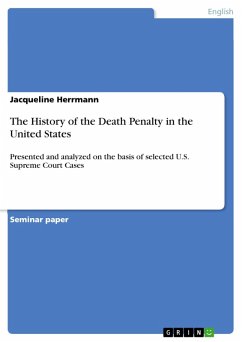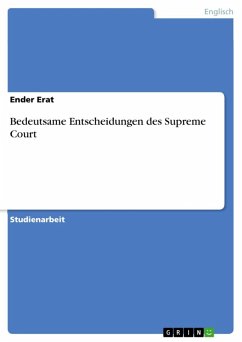Seminar paper from the year 2002 in the subject American Studies - Culture and Applied Geography, grade: 1,0 / A, University of Kassel, course: Amerikanische Entwicklung im Spiegel ausgewählter Entscheidungen des Supreme Court, language: English, abstract: "Equal Justice Under Law" - this inscription is written above the main entrance of the Supreme Court building, proclaiming that every case and individual will be judged according to the same principles. Members of the court have the duty to come to a decision, which is free of personal and also political influences, a task that requires numerous virtues, among them independence, incorruptibility, and the self-confidence to apply new methods that might alter the country. Accordingly, the work of a Supreme Court justices makes high demands on a person and it is doubtful that any judge would be able to fulfill them. Yet from which point of view are these extraordinary individuals selected? And who has a right of codetermination in the appointment process? Since the Supreme Court is a major policy maker in the U.S, the appointments of the justices have a great impact on the future of the country. Consequently, the nominations are fundamental to a number of people, organizations and interest groups, as possible future decisions of the tribunal might transform society and American life. This paper will investigate the selection and nomination process of Supreme Court justices and the factors playing a role in the background. Beginning with an historical overview, we will take a closer look at the legal foundation and the early stages of the newestablished court. The second part attends to the qualification of justices and their ensuing appointment, also taking into consideration the various demographic factors that might influence a selection nowadays. Subsequently, the focus will be on interest groups and other society-relevant organizations, which take an interest in the tribunal and concentrate their attentio n on the selection of justices who are of importance to them. Finally, the thesis will go into the role presidents play in the selection procedure and to conclude I will summarize the results that follow from this work.
Dieser Download kann aus rechtlichen Gründen nur mit Rechnungsadresse in A, B, BG, CY, CZ, D, DK, EW, E, FIN, F, GR, HR, H, IRL, I, LT, L, LR, M, NL, PL, P, R, S, SLO, SK ausgeliefert werden.









